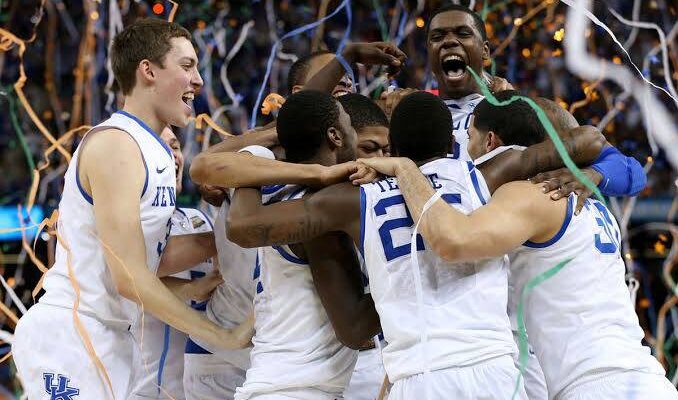The year 2012 stands as a glorious, almost mythical, chapter in the storied history of Kentucky Wildcats basketball. Under the guidance of Coach John Calipari, a roster brimming with future NBA talent steamrolled through the competition, culminating in the program’s eighth national championship. They were a dominant force, a whirlwind of athleticism, skill, and youthful exuberance. With a 38-2 record, they were voted the best college basketball team of the decade by an Associated Press panel, leaving an indelible mark on the sport.1 But what happened next to these championship heroes? The narrative that followed is a fascinating, at times shocking, blend of soaring professional success, unfulfilled potential, and careers that took unexpected turns.
At the heart of that dominant 2012 team was a freshman phenom, Anthony Davis.2 His singular season at Kentucky was a revelation, characterized by his incredible shot-blocking, rebounding, and developing offensive game. He was the undisputed National Player of the Year and the Final Four Most Outstanding Player, despite shooting just 1-for-10 from the field in the championship game, dominating instead with 16 rebounds, six blocks, and three steals.3 What happened next for Davis was a swift ascent to NBA superstardom. Drafted first overall by the New Orleans Hornets (later Pelicans), he quickly established himself as an elite big man.4 He became a multi-time All-Star, an All-NBA First Team selection, and a perennial Defensive Player of the Year candidate.5 His move to the Los Angeles Lakers in 2019, joining LeBron James, led to an NBA championship in 2020. Davis has cemented his place as one of the league’s premier talents, showcasing a versatile offensive game coupled with stifling defense.6 His career trajectory has been nothing short of spectacular, fulfilling every ounce of his immense potential. He is the prime example of the 2012 team’s lasting legacy of producing NBA giants.
Then there was Michael Kidd-Gilchrist (MKG), the heart and soul of that Wildcats squad. Drafted second overall by the Charlotte Bobcats (now Hornets) directly after Davis, MKG was celebrated for his relentless energy, defensive tenacity, and infectious passion. He was seen as a foundational piece for Charlotte, a lockdown defender who could impact the game without needing to score. His NBA career, however, was marred by a mysterious decline due to persistent injuries and an evolving offensive game that never quite caught up to the demands of the modern NBA. He spent eight seasons primarily with the Hornets, showing flashes of his defensive brilliance and improved shooting mechanics, but numerous leg injuries, including knee and hamstring issues, consistently derailed his progress. He struggled with a unique shooting form that was often criticized, and while he worked tirelessly to refine it, it limited his offensive impact in an increasingly perimeter-oriented league. After a brief stint with the Dallas Mavericks in 2020, his NBA career concluded. While he carved out a respectable career as a defensive specialist, it never reached the All-Star potential many envisioned for the No. 2 pick, making his post-Kentucky journey a poignant tale of what might have been due to circumstances beyond his control.
Terrence Jones, a dynamic sophomore forward, was another key component of the 2012 championship team, known for his versatility and athleticism.7 Drafted 18th overall by the Houston Rockets, Jones showed immense promise in his early NBA years. He was a solid contributor for the Rockets, capable of scoring, rebounding, and blocking shots. His career peak saw him averaging double-digit points and respectable rebounding numbers. However, his tenure in the NBA was also significantly impacted by a string of unfortunate injuries, including nerve inflammation in his leg, a lacerated eyelid, and a collapsed lung. These health setbacks prevented him from establishing consistent momentum and reaching his full potential. He bounced around the league for a few more seasons, including stints with the New Orleans Pelicans and Milwaukee Bucks, and also played internationally in China and in the NBA G League, before his NBA career quietly faded out. His was a story of a promising talent whose path was repeatedly disrupted by physical ailments.
Marquis Teague, the lightning-quick freshman point guard, orchestrated the offense for the Wildcats. Drafted 29th overall by the Chicago Bulls, Teague entered the NBA with high expectations as a floor general.8 However, his NBA career was short-lived, spanning only three seasons with the Bulls, Nets, and Grizzlies. He struggled to find consistent playing time and to translate his college success to the more demanding, physical, and strategic NBA game. After his brief NBA stint, Teague continued his professional career overseas and in the G League, showcasing his skills internationally, but never regaining a foothold in the NBA. His was a rapid decline from the bright lights of college championship glory to a career primarily spent in international leagues.
Doron Lamb, a sharp-shooting sophomore guard, was instrumental in providing offensive firepower for the Wildcats, especially from beyond the arc.9 Drafted 42nd overall by the Milwaukee Bucks, Lamb spent just two seasons in the NBA with the Bucks and Orlando Magic. While he demonstrated his ability to hit three-pointers, he struggled to carve out a consistent role and contribute significantly in other areas of the game. Like Teague, he continued his professional career overseas, playing in various leagues across Europe. His story reflects the challenge many college standouts face in carving out a lasting niche in the NBA, often leading to successful international careers.
Finally, there was Darius Miller, the senior leader and glue guy of the championship team.10 Drafted 46th overall by the New Orleans Hornets, Miller’s NBA career has been one of quiet perseverance and impactful role-playing. He carved out a respectable eight-season NBA career, primarily with the New Orleans Pelicans and a brief stint with the Oklahoma City Thunder. He developed into a valuable 3-and-D wing, known for his consistent three-point shooting and solid defense. Unlike some of his flashier teammates, Miller’s ascent was more gradual, and his decline less dramatic, marked by a major Achilles tendon injury in 2019 that significantly impacted his later career. He played internationally in Germany for a few seasons before returning to the NBA. His journey is a testament to the fact that success in the NBA isn’t solely defined by draft position or immediate stardom, but by longevity and carving out a meaningful role.
The 2012 Kentucky Wildcats were a collection of singular talents, brought together by John Calipari to achieve college basketball’s ultimate prize. What happened next to these championship heroes is a diverse tapestry of outcomes. Anthony Davis ascended to undeniable NBA superstardom, fulfilling his immense promise. Michael Kidd-Gilchrist and Terrence Jones showcased flashes of brilliance but were ultimately hindered by recurring injuries, leaving questions of unfulfilled potential. Marquis Teague and Doron Lamb had brief NBA stints before finding success in international leagues. And Darius Miller, the steady senior, carved out a valuable and surprisingly long career as a reliable role player.
The story of the 2012 Wildcats is a captivating one, a testament to the unpredictable nature of professional sports. It’s a tale of meteoric rises, challenging setbacks, and the varied paths that young athletes take after reaching the pinnacle of college basketball. The team’s collective dominance in 2012 was undeniable, but the individual journeys of its members afterwards offer a mysterious, and at times shocking, look into the unpredictable forces that shape athletic careers.



